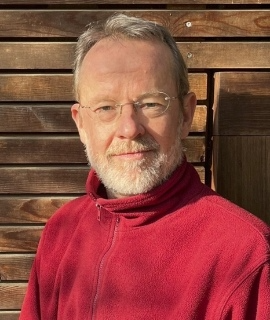Title : SpiraliK – Where mind and body meet
Abstract:
SpiraliK Positioning
SpiraliK is a concept within the holistic method of kinesiology ("science of movement"), which belongs to the field of complementary therapy but is also used in coaching. It is characterised by its Integral Movement Model, in which movement is understood as the smallest common aspect and connecting principle of all life processes. It serves us as a perspective for linking seemingly separate areas such as body & mind, inside & outside or individual & collective and understanding them as a coherent whole.
SpiraliK Basics
The SpiraliK Integral Movement Model is essentially based on 5 approaches that focus in depth on individual aspects of movement:
1. Energy Model – 5 Phases of Transformation: This model from Traditional Chinese Medicine shows the basic principles of movement from an energetic perspective.
2. Coordination Model – Spiraldynamik®: This model shows how the human body is organised in a spiral, from which natural movement patterns can be derived.
3. Life Model – Fritjof Capra: This model divides the phenomenon of life into three overarching criteria: organisational pattern, dissipative structure and cognitive process.
4. Development Model – Spiral Dynamics®: This model shows how development processes follow stereotypical sequences and are organised on the basis of values at different levels.
5. Integral Model – Ken Wilber: This model integrates various research approaches into a comprehensive overall view of the topics of philosophy, psychology, consciousness and spirituality.
SpiraliK Model
SpiraliK interprets movement as a complex interplay of interdependent parts that together form a nested unit. We record any situation using the criteria "systems involved", "dynamics", "relationship", "perception" and "development" in a movement profile and derive the motives from this in the form of desired needs. In this way, physical (structural and functional) and psychological (emotional and mental) levels can be described using the same language and condensed into a holistic ("soul") experience.
SpiraliK Problems
The quality of the organisation of movement between the parts determines the well-being, health and performance of a system. Problems are therefore an expression of an unbalanced interplay of parts whose endeavours impair the conditions of other parts and trigger resistance. The holistic spectrum of needs is disrupted, resulting in stress reactions with turbulent flows on a physical, mental or soul level.
SpiraliK Solutions
Through dialogue, kinesiological muscle testing and specific movement analyses, deficiencies and resistances can be decoded as hidden resources, revealing surprising new solutions to complex issues. Through balancing energy work and accompanying exercises, we integrate the interaction of the parts into a new unit of higher level of quality. Step by step, we promote positive perspectives and support upcoming developments on all planes.
SpiraliK Application
With this approach, any initial situation can be identified as a movement process and balanced by regulating its organisational patterns, for example:
• For somatic, psychosomatic or psychological impairments, complaints or illnesses, in palliative situations
• Before and after medical interventions, after injuries, for rehabilitation, for prevention
• For learning difficulties, personality development, spiritual development
• In sport and music to optimise performance and prevent overload
• In partnerships, for team and organisational development in family, sport, business and
politics
Audience Take Away:
- The audience learns a new way of interpreting "movement".
- This interpretation shows inspired paths in which areas of life that were previously experienced as separate can grow together to form a new wholeness.
- As a result, deficiencies or resistance in the personal or professional environment can be utilised productively.
- Any life processes can be checked for their health and sustainability.
- Change and development processes can be stimulated in a targeted and multipolar way and supported holistically



